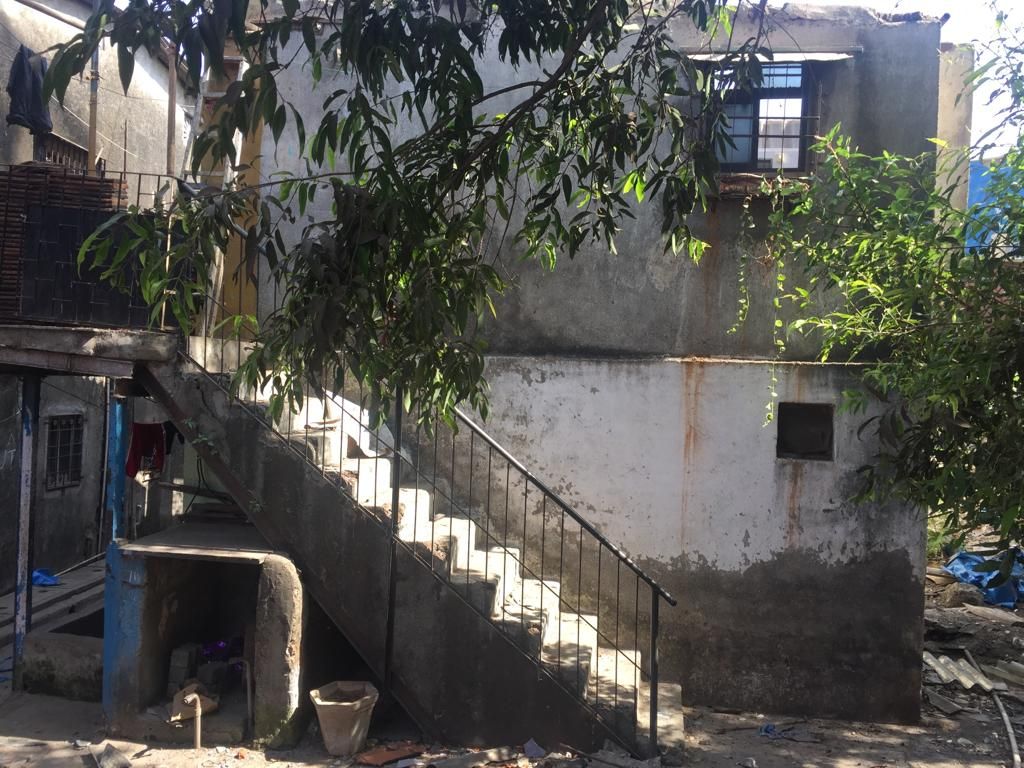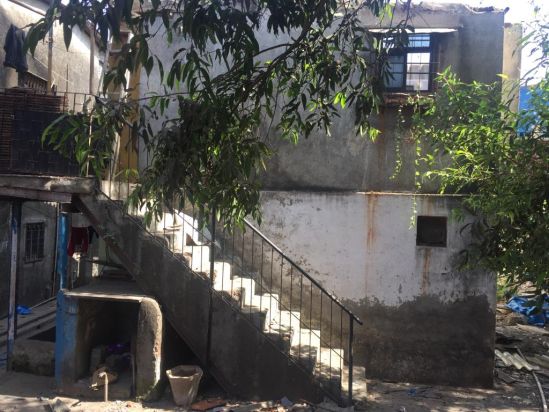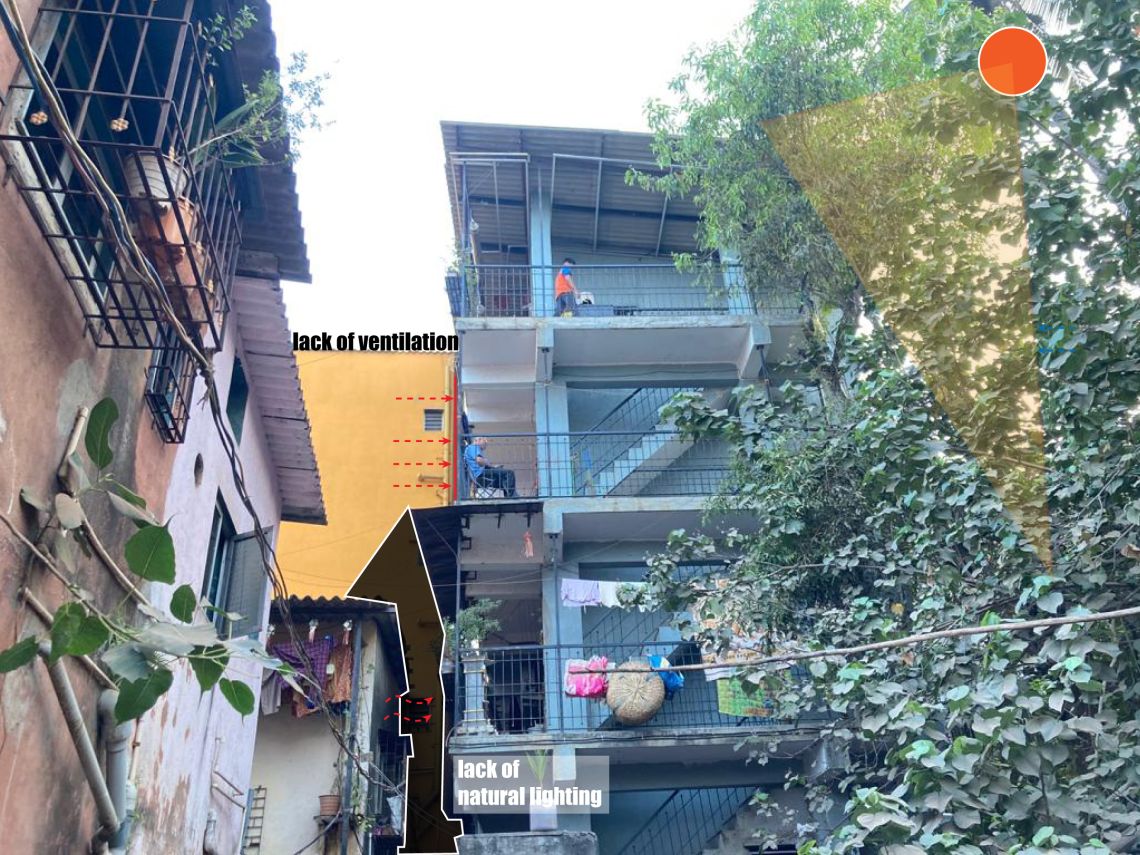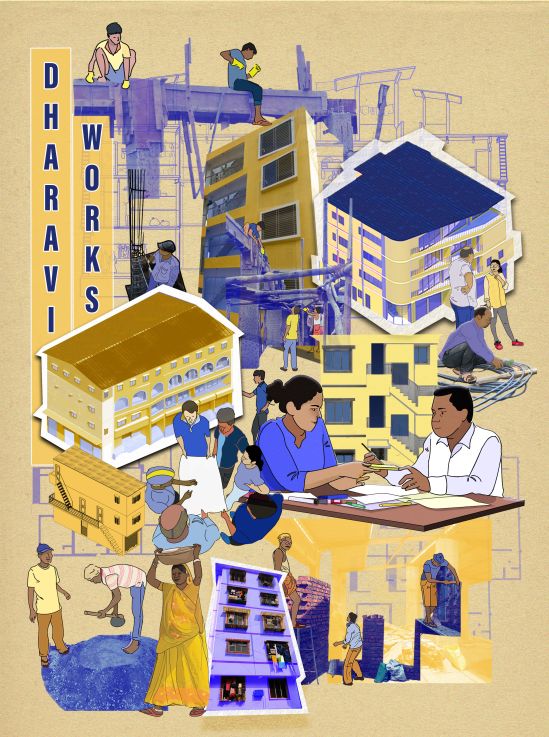Inside-Out | The Case of Vithoba Ganpat Chawl

Inside-Out | The Case of Vithoba Ganpat Chawl
This article talks about the experiences of residents, post re-development, with respect to location, its footprint, conscious design decisions, and utilization of spaces around through the example of Vithoba Ganpat Chawl, redeveloped by its residents in collaboration with urbz in Dharavi, Koliwada, Mumbai.
To reach here, you pass through several narrow dark alleys from the Dharavi main road with extremely dimly lit paths and open gutters, and houses juxtaposed against each other, that eventually pour into a small open space with children playing and the constant hum of traffic noise in the background due to the proximity to the Link Road.
Before redevelopment, the chawl used to be a two-storey building in a deteriorated dilapidated state where the residents were continuously at risk. A worn-out building surrounded by a dumping space, no toilets, and issues such as water-logging and leakage from roofs had a huge impact on their way of living. However, unlike most of the chawls, it was surrounded by quite a few open spaces making it stand apart, and creating opportunities for a more ambitious and environmentally considerate building design through optimizing orientation, that could take full advantage of its location and utilize the open spaces around it - a luxury for very few in the dense urban grain of Dharavi.
Therefore the new design was created keeping in mind the above-mentioned factors. During a conversation with our architect Jai Bhadgaonkar, he mentioned the importance of extensions in this chawl, the added layer of public space provided to the residents for recreational purposes. Keeping the massing as it is, the main focus was to add those ‘plug-ins’ for better movement within the chawl. Proposing a wider corridor and a bigger staircase area encourages residents to spend more time interacting while looking over to the tree canopy and open space for an enhanced experience. This space is currently used by all age groups during different times of the day to sit and chat while doing household chores like chopping vegetables and playing. It even acts as just a pause point for accidental encounters among residents throughout the day.
Along with that, ensuring a comfortable experience indoors was vital. For that, design decisions such as the direction of openings, and the east-west orientation of the building were considered, allowing the movement of air and natural light, and good ventilation, and letting the chawl ‘breathe’ throughout the day. Another pertinent factor is materiality, such as replacing load-bearing structures with RCC for flexible construction of extensions and using roofing sheets to avoid leakages. These decisions drive the nature of the ‘micro-climate’ and form the immediate environment of the individual buildings. According to Baruch Givoni in his book Climate Considerations In Buildings And Urban Design, the modified climate directly affects the indoor comfort conditions, giving the experience of being on the outside in the open, from the comfort of your room on the inside. One of the residents of the chawl also confirmed saying,”We don't use lights or fans most of the day, there is ample wind and light throughout that day. I even enjoy working in the kitchen overlooking the green trees.”
The residents seem content with their redeveloped homes. However, nothing works in isolation. Every decision has its impact, positive or negative, on its surroundings. Increasing the number of floors has restricted access to natural light inside their neighbour's homes. Ventilation is obstructed leading to bad air quality inside their homes. They have to depend more on artificial sources for light and air than before. This brings us to the question, how can there be development and growth consistently but not at the cost of others suffering because of it? Perhaps developing buildings as a neighbourhood through master planning and not seeing them in isolation while also involving the residents in the process, to achieve a more satisfactory result for all, is something to ponder upon. As said by Jane Jacobs in her book, Life And Death of Great American Cities, “producing free-standing individual buildings would put an end to urban space.” It would also directly or indirectly affect our way of living, our health, and our relationships with our surroundings and neighbours for years to come












